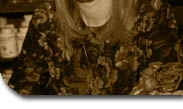(68)
When this study was
reviewed by the Bureau of Foods in l975,
the
dose-related incidence
of uterine polyps was noted. The appropriate
slides were requested
by FDA at that time and were reviewed
by three
groups of pathologists:
1.) The Division of Pathology, Bureau
of Foods,
2.) Armed Forces
Institute of Pathology, 3.) Massachusetts
Institute of
Technology. Copies
of the reports submitted by the 3 groups
and related
correspondence were
obtained and are attached as exhibits
#43-45.
Dr. Rudolph Stejskal
was responsible for the microscopic findings
and
accuracy on these
findings in the submission to FDA. Only
Dr. Stejskal's
name appears on the
submission. However, a Dr. Joseph H. Smith,
M.D. also
read slides for this
study and his initials appear on some
of the
microscopic examination
sheets. Dr. Frith questioned some of the
terminology used
in describing tissues. Dr. Stejskal stated
that Dr.
Smith had come directly
to SEarle from a hospital situation. Due
to his
human pathology background,
his description of animal tissues was
somewhat
different than that
used by veterinary pathologists.
Dr. Stejskal joined
SEarle in July of l973, therefore, he
had no input
into the pathology
protocol, since E-77/78 was initiated
in November of
l971.
No microscopic worksheets
or other "raw data" relating
to microscopic
pathology could be
found for study E-77/78. We were told
by Searle
personnel that the
original microscopic findings were dictated
by the
pathologists (Stejskal
& Smith) onto belts, and then typed
onto sheets
which were placed
in a binder. The belts were then discarded
and
apparently the bound
microscopic pathology sheets were either
discarded or
lost, after the study
report was written. Therefore our verification
of
the microscopic findings
submitted to FDA was limited to a complete
inventory of the
slides and tissue blocks and microscopic
examination of a
representative number
of slides by Dr. Frith.
Our inventory of
the slides and tissue blocks for each
animal
included a complete
list on the tissues sectioned, the number
of slides made from
each tissue, and a complete count of the
total number of slides
and blocks for each animal. We also checked
the identification
numbers on every slide and tissue block.
We
examined a total
of 7,872 slides and 7,360 tissue blocks.
The
average number of
organs submitted for tissue processing
was
(69)
20 per animal. No
errors in slide identification were noted,
although in many
cases the number of organs submitted for
sec-
tioning was less
than specified in the protocol. A detailed
dis-
cussion of this can
be found under the heading PROTOCOL.
In addition to the
discrepancies noted by Dr. Frith, some
other errors
were noted in the
submission to FDA. A mammary tumor found
in rat F27CF
was described as
a papillary cystadenoma on the individual
pathology sheet
(page 105, Volume
II of the submission to FDA) and as an
adenocarcinoma on
the summary table
12, page 96, Volume I of the submission
to FDA.
Page 92, Volume I
of the submission to FDA (a summary table)
reports that
animal J23CM was
found dead after 754 days on study, while
the individual
pathology sheet for
this animal (page 56, Volume II of the
submission to
FDA) reported that
the animal was found dead after 620 days
on study.
The correct figure
is 620 days, since J23CM was placed on
the study on
11/17/72 and was
found dead on 7/29 /73.
In several instances
the histopathology technician made notes
at the
bottom of the gross
pathology sheet to indicate that certain
organs were
not present in the
bottle of fixative. (and were therefore
not available
for sectioning).
Yet in three of these instances (animals
A4CM, K23CF,
and J3CM) a diagnosis
appears in the submission to FDA.
CHARTS, DIAGRAMS
AND TABLES
It was necessary
to construct a number of charts, diagrams
and tables to
facilitate our review
of the data. For example we constructed
a chart, by
housing group, showing
the identification and complete pathology
history
of each of the 360
animals. We also rearranged this chart
into dosage
groups, a copy of
which is attached as exhibit #35.
To compare survival
data it was necessary to construct a survival
table.
This also involved
devising a calendar to show days and weeks
on study for
each housing group,
taking into account the starting dates
for each group.
This also included
tables showing the numbers of days and
weeks animals
were on study and
a table comparing the survival data from
various
sources.
We constructed a
chart showing diet calculations (gm./kg)
and total
amounts of DKP used
(gm./batch). This is attached as exhibit
#30.
(70)
Three tables were
constructed which summarize the FDA statistical
analysis
of body/feeder weight
data. They are attached as exhibits #39-41.
All of the charts,
diagrams and tables that we constructed
are attached to
the report as exhibits
and are referred to in various sections
of the
report.
EXHIBITS
#1. G.D. Searle &
Company Annual Report for l976.
#2. Organizational
Chart of Pharmaceutical/Consumer Products
Group.
#3. Organizational
Chart of World Wide Pharmaceutical R&D
Group.
#4. Organizational
Chart of Preclinical R&D Group.
#5. Organizational
Chart of Product Safety Assessment Group.
#6. Copies of Computer-Generated
Randomization Tables used by Searle
to assign the Dose
& Housing Groups.
#7. Diagram showing
Typical Housing Group of 30 animals, containing
a random distribution
of control and treated animals.
#8. Diagram showing
arrangement of food cups on cart, used
in feeding
the animals.
#9. Copy of "Glossary
of Terms for Aspartame and its Diketopiperazine"
and "Analytical
Data and Specifications of Food Grade
Aspartame".
#10. Copy of shipping
labels for rats received from
#11. Copy of protocol
with amendments for Study P.T. 988S73
(E-77/78).
#12. Copies of CV's
for principal persons involved in study
E-77/78.
#13. Copies of Batch
Records for the manufacture of DKP, lots
1R through
5R.
#14. Copies of pages
from SEarle chemist Jack Drogt's notebook,
con-
cerning the manufacture
of DKP.
#15. Copies of Analytical
Reports for DKP, lots 1R through 7R.
#16. Copy of Searle
memorandum dated 12/4/69, concerning DKP
Specifica-
tions.
#17. Copy of DKP
Specification Sheet (not dated) entitled
"Tenative Specifications
for SC-19192".
(71)
#18. Copy of DKP
Specification Sheet entitled "Specifications
for
SC-19192, Specification
#C40606C".
#19. Copies of pages
75-84 & 285 of lab notebook #AR-39,
concerning
assay of DKP, lots
1R, 2R & 3R.
#20. Copies of pages
60-63 of lab notebook VSH-I, and page
269 of
lab notebook book
#AR-23, pertaining to analysis of DKP
lot 4R.
#21. Copies of pages
250, 251 and 257 of lab notebook #AR-57,
and
pages 44-49 of lab
notebook #AR-68, pertaining to analysis
of
DKP lot 5R.
#22. Copies of pages
83-86 of lab notebook #AR-77, concerning
analysis
of DKP lot 6R.
#23. Copy of page
31 of lab notebook #AR-93, concerning
analysis of
DKP lot 7R.
#24. Copy of protocol
for DKP stability study, dated 1/13/72.
#25. Copies of pages
51-56 of laboratory notebook #AR-49, assigned
to
C. Seul. These pages
describe a preliminary TLC Test for
recovery of DKP from
the diet mixture.
#26. Copies of pages
53-59, 67-72, 88-89, 106-107, 144-145,
156-157,
and 284-285 of laboratory
notebook #AR-51, assigned to Barbara
Bickford. These pages
refer to the assay procedure and methods
for the DKP Stability
Study.
#27. Copies of Analytical
Reports for DKP Stability Study.
#28. Copies of DKP
Compound Inventory Cards.
#29. Two photographs
showing a non-homogeneous sample of DKP
diet mixture.
#30. Chart showing
diet calculations (gm.kg.) and total amounts
of DKP
used (gm./batch).
#31. Two memos dated
7/14/77 from Thomas F.X. Collins concerning
interview
with Ray Schroeder.
#32. Memo dated 7/19/77
from Thomas F. X. Collins describing the
7/18/77
interview with Ray
Schroeder.
#33. Memo of Telephone
Conversation between Jerome Bressler and
Attorney
John H. Bickley Jr.,
dated July 25, l977.
#34. Copies of records
concerning calculation of diet concentrations,
food
concentrations prediction
records, dates of bath mixing, and calcu-
lation of mean food
intake values.
#35. Charts organized
by dose group, showing the identification
and
pathology history
of each of the 360 animals on study.
#36. Memo dated April
5, l976, from Dr. John H. Rust to Dr.
R. McConnell.
#37. Searle memo
dated September 30, l974, by Dr. McConnell.


